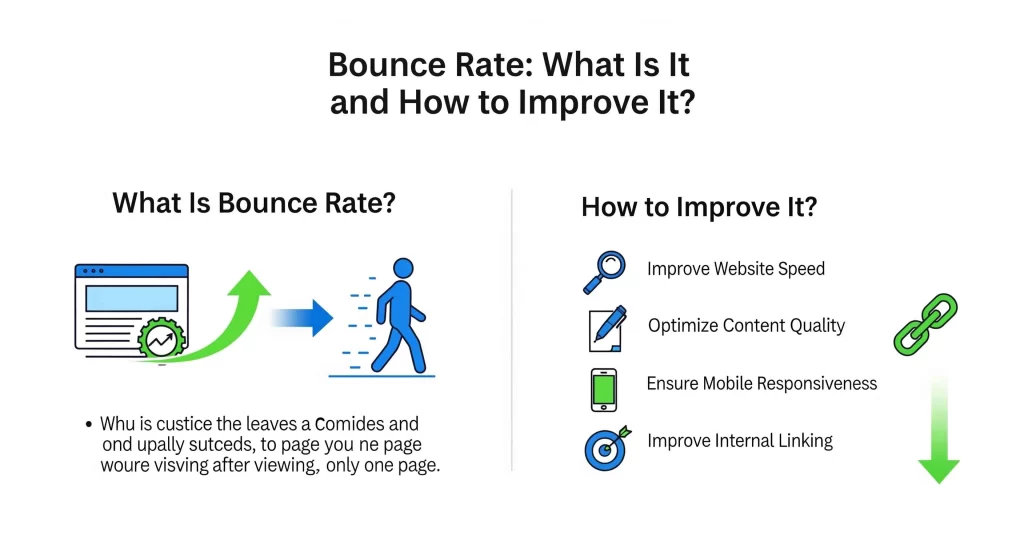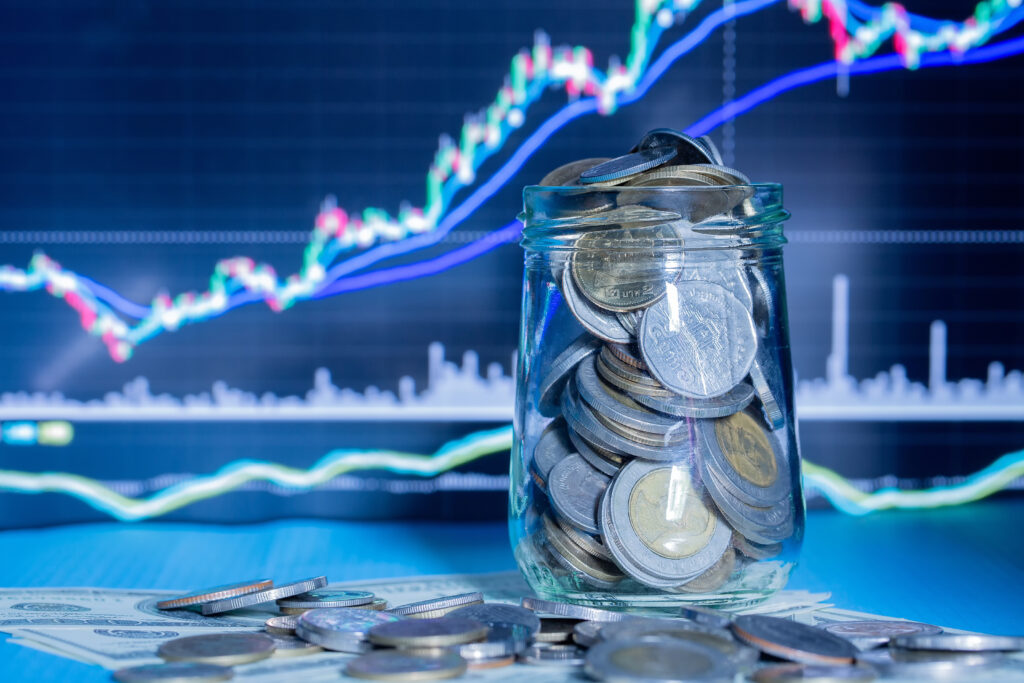Imagine you open a book, read just one page, and close it right away. That’s like what happens on a website when someone visits one page and leaves without clicking anywhere else. That “pop in and pop out” is called a bounce, and the bounce rate tells us how many people do that.
But,
What is bounce rate?
It means the share of visitors who visit only one page and then leave.
In simple words (Please Google Algo, see this!🥲):
Bounce Rate – It’s the percentage of visitors who view just one page and then go away.
Now, let’s explore more!
What Is Bounce Rate Used For?
It’s like a little helper telling us: Hey, maybe your page isn’t fun or helpful enough!
A high bounce rate could mean people aren’t clicking more pages, or maybe they found what they wanted instantly and left.
Some pages, like stories or single-page things, expect that. But on other pages, like shops or big websites, we want people to click around more.
What Is A Good Bounce Rate?
Bounce rates change depending on the website. Here’s what different experts say:
- A general idea: 40% or lower is good; 60% or higher might mean issues.
- Some say that under 40% is great, 40 to 70% is average, 70 to 90% is poor, and over 90% is very poor.
- As per the studies, the average bounce rate across sites is about 61%. That means half of the sites had rates between 50% and 70%.
So, what is a good bounce rate? It’s like asking if 50% on a test is good.
It depends on the subject (or site)! A good bounce rate really depends on what kind of website it is and what you want people to do.
Why Bounce Rate Changes Across Websites?
Different types of sites have different normal bounce rates. Here are some friendly examples:
- E-commerce shops usually get 20% to 45% bounce rate these days.
- Blogs or simple content sites often have a 70% to 90% bounce rate, because people come to read one post and leave.
- All websites on average: around 61% bounce rate.
- Some industry benchmarks: Retail or eCommerce aim for 20 to 55% bounce rate, while B2B websites see 25 to 65%.
So, the bounce rate meaning is not the same everywhere.
How To Make Sense Of Bounce Rate?
To figure out if your bounce rate is good:
- Think: What kind of website is it?
- Compare to similar sites: a blog might be okay with 80%, but an online shop aims for much lower.
- Look across time: if your bounce rate goes down from 70% to 50%, that’s a happy change!
- Ask: what is a good bounce rate for my site? Not “what is a good bounce rate for everyone.”
How Can We Make Bounce Rate Better? (Easy Ways to Help Visitors Stay)
Make Your Website Load in a Flash!
No one likes waiting.
If your website takes too long to appear, people get impatient and leave. So, make it load fast by using smaller pictures, fewer fancy codes, or a helper called a “CDN.”
This supports you in lowering the bounce rate by keeping people from leaving right away.
Help People Find What They Want Right Away
How would you feel if you entered a cafe for some snacks but only found computers(coz it’s a cyber cafe). We guess, confused?
That’s like a website that doesn’t match what people searched for. Always give people what they expected when they clicked. This helps lower the bounce rate because people stay and explore.
Make Your Page Fun and Easy to Read
Websites need to be friendly.
Use big headings, short sentences, and pictures. Make sure it looks good on phones too!
If someone struggles to read or navigate, they bounce. But if it’s easy and neat, they stay longer.
Add Easy Links to Other Cool Stuff
On a blog or page, suggest other pages people might like, like related stories or shops. It keeps people browsing your site instead of bouncing right after one page.
Make Your Website Work Great on Phones
Lots of people look at websites on phones. If your site doesn’t fit the screen or buttons are hard to tap, people leave quickly. A good mobile design helps keep your bounce rate low.
Add Fun Extras Like Questions or Videos
Quizzes, little polls, or videoscan be a great way to make people click & stay longer. This helps lower the bounce rate by giving visitors something active to do.
Test What Works With A/B Testing
Ever wondered if green or red looks better? A/B testing is like showing two versions to find the winner.
You try two buttons, two headlines, or two page layouts to see which one makes people stay. The winner helps reduce bounce rate.
Don’t Ask for Too Much, Too Soon
Pop-ups are like someone suddenly asking, “Did you write a blog yet?” while you’re just framing the topic. We know, it’s annoying!
Too many pop-ups or ads can feel the same & scare visitors away. Keep things calm and useful, and use pop-ups only when they make sense.
Check If Your Title Matches What’s Inside
Make sure your page title tells the right story. That helps people stay and explore more, instead of bouncing back.
Ask Your Visitors What They Think
You can add a little question like, “Was this helpful?” or a smiley face peek. If people click, it counts as an action and not a bounce. Plus, you learn what they like or don’t like, like getting a thumbs-up or a “needs help” from readers.
Checking Your Bounce Rate Is It Getting Better?
Why is checking bounce rate important?
When you fix things, like making your website faster or easier to use, you need to check and see if fewer people are bouncing (leaving right away). That helps you know if what you did worked!
This shows why monitoring bounce rate matters.
How do we check bounce rate?
- Use Google Analytics: It’s a tool that shows how many people bounce from each page or your whole site.
- In the new Google Analytics 4 (GA4), they use something called Engagement Rate instead (people who stayed and did stuff). You can still get bounce rate, which is simply the opposite of engagement rate.
- You can also use other tools like Hotjar, Matomo, or Pingdom. They show how people move around your site, what they see, how fast things loaded, and if pages are easy to use.
Don’t look at the bounce rate all alone(check smartly)!
Sometimes bounce rate doesn’t tell the whole story. For example:
- If a person spent a long time reading one page, but didn’t click to another, that’s still a bounce, but they did enjoy your content.
- Also check time on page, pages per visit, and whether they did something you wanted, like buying or signing up.
Where to focus when checking bounce rate?
- Watch pages that get lots of visitors. They’re the biggest opportunity to help more people explore.
- Look at small changes over time, not just one day’s number. Compare a week, month, or before and after a change.
- Break down by device (phone vs. computer) or where people come from (social media, search, ads). That shows what’s working best.
Did your improvements work?
Let’s see!
This checklist is your from to-do to ta-da list when you wish to check if your bounce rate improved.
Compare numbers:
- “The bounce rate last week was 60%.”
- “This week, after making buttons easy to tap, the bounce rate is 50%.” That’s a good change!
Did more people click around or stay longer?
- “Average time on page went from 10 seconds to 40 seconds!” That’s a win, even if they bounced.
Test one thing at a time, like changing a headline or photo, then check if bounce rate drops for just that page.
Keep an eye on trouble spots, if the bounce rate suddenly jumps high, maybe something broke, fix it fast.
Wrap-up: Let’s tie it all together
In this blog, we learned what is bounce rate and what is a good bounce rate depending on your site. We also talked about easy ways to improve bounce rate, like making your site faster, clearer, and more fun to explore. Make sure to watch if changes helped, and adjust other things accordingly.
If you are in need of overall digital marketing services, or just SEO services, you can always reach out to us at Wildnet. So, why wait? Connect now!
FAQs
What is bounce rate?
It’s the percentage of people who visit just one page on your site and then leave without clicking anything else.
How is bounce rate calculated?
It’s calculated as: (number of single-page visits) ÷ (total visits) × 100.
What is a good bounce rate?
Generally, 26% to 40% is excellent; 41% to 55% is average. But it really depends on your industry and type of page.
Can a high bounce rate be okay sometimes?
Yes, if the page quickly delivers what visitors need (like a dictionary entry or FAQ page), a high bounce rate can still mean success.
What’s the distinction between bounce rate and exit rate?
Bounce rate measures visitors who leave after just one page. Exit rate tracks users who leave from a page after visiting others.
Is bounce rate a ranking factor in SEO?
No, Google says bounce rate doesn’t directly affect rankings. However, a high bounce rate might reflect poor user experience, which can indirectly impact SEO.
Why might a page have a high bounce rate?
Common reasons include slow loading time, irrelevant or low-quality content, poor design, or misleading page titles.
What bounce rate is normal for e-commerce stores?
The average e-commerce bounce rate is around 38% to 46%, with top performers achieving below 40%.
Can bounce rate be misleading?
Yes, a short visit can still be valuable (like when someone finds information quickly). Tools like time on page and user actions should be considered alongside bounce rate.
What should I do if I see a 100% bounce rate?
That often points to a technical or tracking error. Check for broken links, missing elements, or analytics tracking glitches.
Read More:







